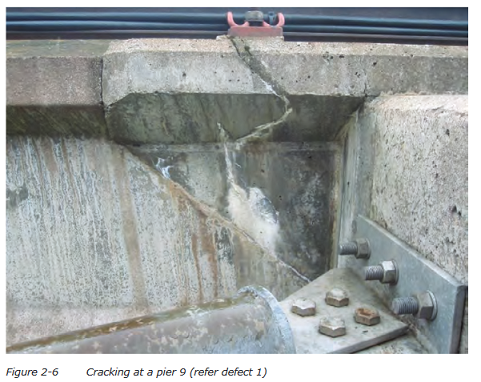
Since the release of the COWI report on 11th December, which Highlands and Islands Enterprise had withheld for two years, Parkswatch has been able to start investigating the repair of funicular (see here) and (here). We have been uncovering new issues and questions on an almost daily basis. For example, Pier 9 (photo above) featured in my last post, but what I had not realised was that this pier is one of a number of piers, P5 – P13 inclusive, below Anchor Block 14 (AB14) which are on a steady gradient, i.e. there are no sudden changes in height, and where no ground work was proposed as part of the planning application:
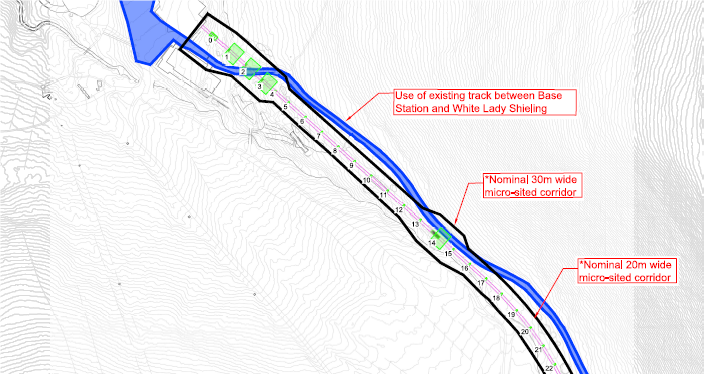
Unfortunately we are unable to do a site visit at present and have been unable to check from photos if it is the only pier in that section that exhibits damage. If it is, then why is it in such poor condition? Above ground work was not included in the planning application to the Cairngorms National Park Authority and because of that it is not clear what superstructural repairs are include in the £16m repair to the funicular. Information about that is important for understanding what has gone wrong and why repairs are needed.
Following my first post on the repairs, parkswatch was contacted by someone who knows Cairn Gorm well, knew people who had been involved in construction work there and has expertise in rail tracks. He told me that about two years after the funicular was opened he had gone up to the Ptarmigan and became very aware of an increased level of noise as the train entered the tunnel. This is a classic sign of corrugated rails and he advised management at the time that if rail grinding wasn’t carried out the problems would only get worse. Nothing happened.
The need for rail maintenance
Because of the interaction between the wheels on a train and the tracks themselves, rails become rippled/ corrugated, i.e. high and low spots. These, if they aren’t repaired, get worse and lead to hairline cracks in the rails which only get bigger and can eventually lead to rail failure.
Corrugated rails also cause vibrations in the rails which in the case of the funicular may have been transmitted to the concrete crossheads, piers and foundations, causing damage to the structure and also to the carriages themselves, making for an uncomfortable ride. The worse the corrugation, the worse the vibration.
On Friday 01/12/2017 the following announcement was made:-

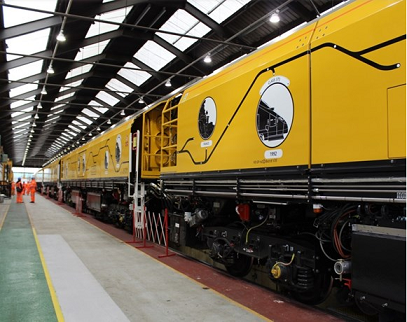
What, you may well ask, has that to do with the Cairngorm funicular? The answer is that corrugated rails occur on every rail track, including the funicular! Obviously such huge machinery is not necessary for funicular railways and there are small machines which, with a suitably qualified operator, are more appropriate.
The following extracts are from the Loram website, an American company who specialise in rail grinding equipment with a subsidiary Loram UK in Derby.

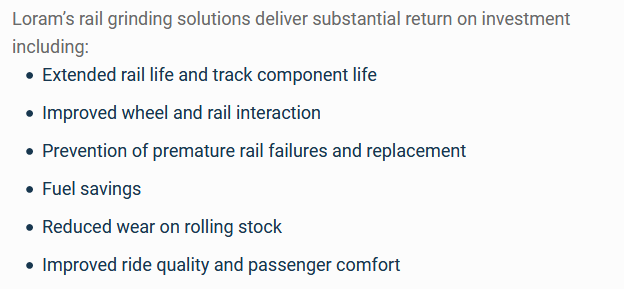 After New Year I contacted a company who carries out this kind of work and asked about inspection/maintenance times. The company recommended inspection of tracks about every six months and, if there is a problem with the rails, they then carry out rail grinding with a machine that can be used on one track at a time. It is not clear, how often, this had been done at Cairn Gorm but I have checked and it is done on funiculars in the Alps. I therefore sent a Freedom of Information request to HIE on Wednesday 06/01/2021 asking for details of maintenance to the track as well as the bogies.
After New Year I contacted a company who carries out this kind of work and asked about inspection/maintenance times. The company recommended inspection of tracks about every six months and, if there is a problem with the rails, they then carry out rail grinding with a machine that can be used on one track at a time. It is not clear, how often, this had been done at Cairn Gorm but I have checked and it is done on funiculars in the Alps. I therefore sent a Freedom of Information request to HIE on Wednesday 06/01/2021 asking for details of maintenance to the track as well as the bogies.
Another problem caused by the wheels is wear and tear on the sides of one rail. The wheels on one side of the carriage bogies are double flanged as in the picture below:-
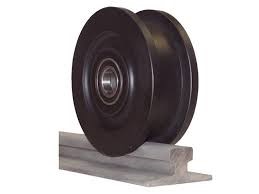
So not only are the wheels on that side wearing the top of the rail, but the sides as well. The funicular could have been not only running on rails which are corrugated on the top, but with wear and tear which would make it rattle from side to side as well! Any vibration and shaking will have been transferred into the piers and bases, and the taller the pier, the worse would be the effect on the foundations.
(NB the following photo appears to show the pier leaning more than it is, as you can see from the fence posts behind, but is the only one we have showing a taller pier)
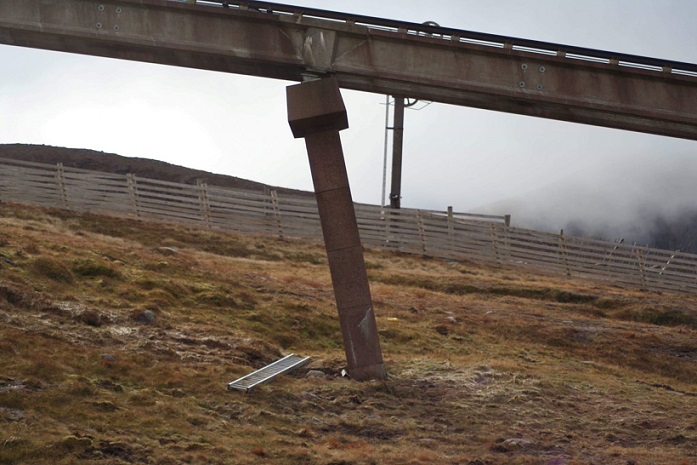
The COWI report says that it is the taller piers that are most affected. Another person who has contacted parkswatch has been a civil engineer and pointed out that a pier of this height should be wider at its base in order to support the weight higher up, that it should taper up to the highest point. But that would have meant that the preformed concrete outer shell at the bottom (no 5) would be larger and contain more re-inforcing than the next one up (No 4) and so on to the top. It could also have meant that the foundations for these taller piers would have to be bigger as well. It was said in the Audit Scotland report of 2009 that, because of the increasing costs, ways were being looked at to try and save money. Was using pre-formed shells of only one size one of the cost saving exercises and did this leave the taller pillars weaker than the short ones placing more stress on the foundations?
I have also been informed that the life span of a track is normally considered to be about 15-20years. Therefore it would appear that the train rails, even if rail grinding has been carried out, should need replacing, increasing the repair costs if that has not already been included in the price.
Our rail contact also mentioned:-
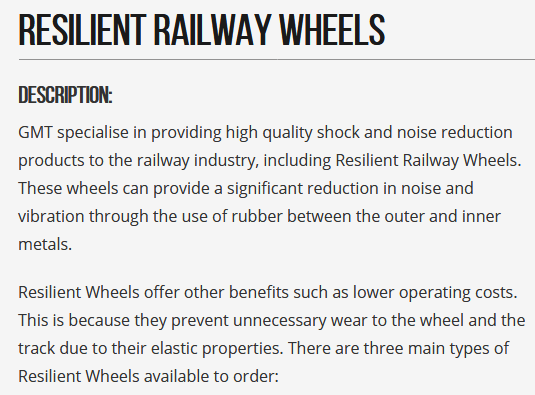
These are not used on the funicular despite their obvious benefits. Did the original design use this type of wheel but again, because of cost cutting measures, the specifications were changed to full steel wheels?
From all the information at present available for public scrutiny there does not appear to be any investigation as to why the funicular has failed, only how it is to be propped up so that it can be used again! Another FOI request has therefore been sent to HIE to understand the reasons for the structural failure. Surely it is imperative that the reasons why it’s structural life has been less than one third of its design life are fully understood and reflected in the repair design? Our rail contact suspects that the propping up will only last about four years unless the faults that caused the failure are repaired!
HIE has a duty to answer these questions before proceeding further with the repairs. More will follow in my next post.
As a one time civil engineer, now long retired, the pictures you show are extremely worrying. If an undergraduate had designed this in one of my classes I suspect he would have not achieved a pass mark. So much of the design is fundamentally flawed, in addition the extreme environment of the structure would itself prompt frequent inspection and maintenance. I have grave doubts as to feasibility of repairing the structure successfully. Seems to me a tear it down and start again is really what is required, thinking carefully about whether a funicular is really solution in this case. I can only thank you for your work in uncovering this problem.
The more you lads look into the whole question of decline of the funicular, the more unanswered questions arise. A basic one is to what extent the problems reflect indaequate design from the start and to what extent they reflect lack of ongoing maintenance. Certainly, HIDB, as it then was, had to reduce annual rental to the original chairlift company from £500,000 to £100,00 in the face of poor returns – which last was less than annual maintenance costs we were told – but whether that referred to maintainance of the funicular or that plus the entire site was not clear. Certainly neglected maintenance built up over the site.
Is it not time a group of concerend NGOs got together and jointly demanded full information from HIE and an independent assessment of real, proven, costs of repair of the funicular. Also, these NGOs need to start writing to the dreaded minister for rural development and put on the pressure about use of public money – including returns in terms of employment created etc
Complementary to the issue of what was the cause of the widespread structural failure of the funicular is the question of whether the designer of the repairs and the contractor appointed to carry out the work are providing any guarantee on the repairs. I don’t just mean a guarantee that the work was carried out as specified, but whether the designer or contractor have given any guarantee on the functional life of the repairs and the associated funicular structure.
If HIE and the Scottish Government are proceeding with no guarantee on the life of the repairs, they are acting negligently, especially when I doubt whether anyone in HIE or the Scottish Government team who approved the spend on the repairs has any technical or engineering knowledge worth talking about.
I heard through the grapevine that so far only 4 of the piers have been fixed so far. So not looking good for opening any time soon. Maybe that question should be asked.